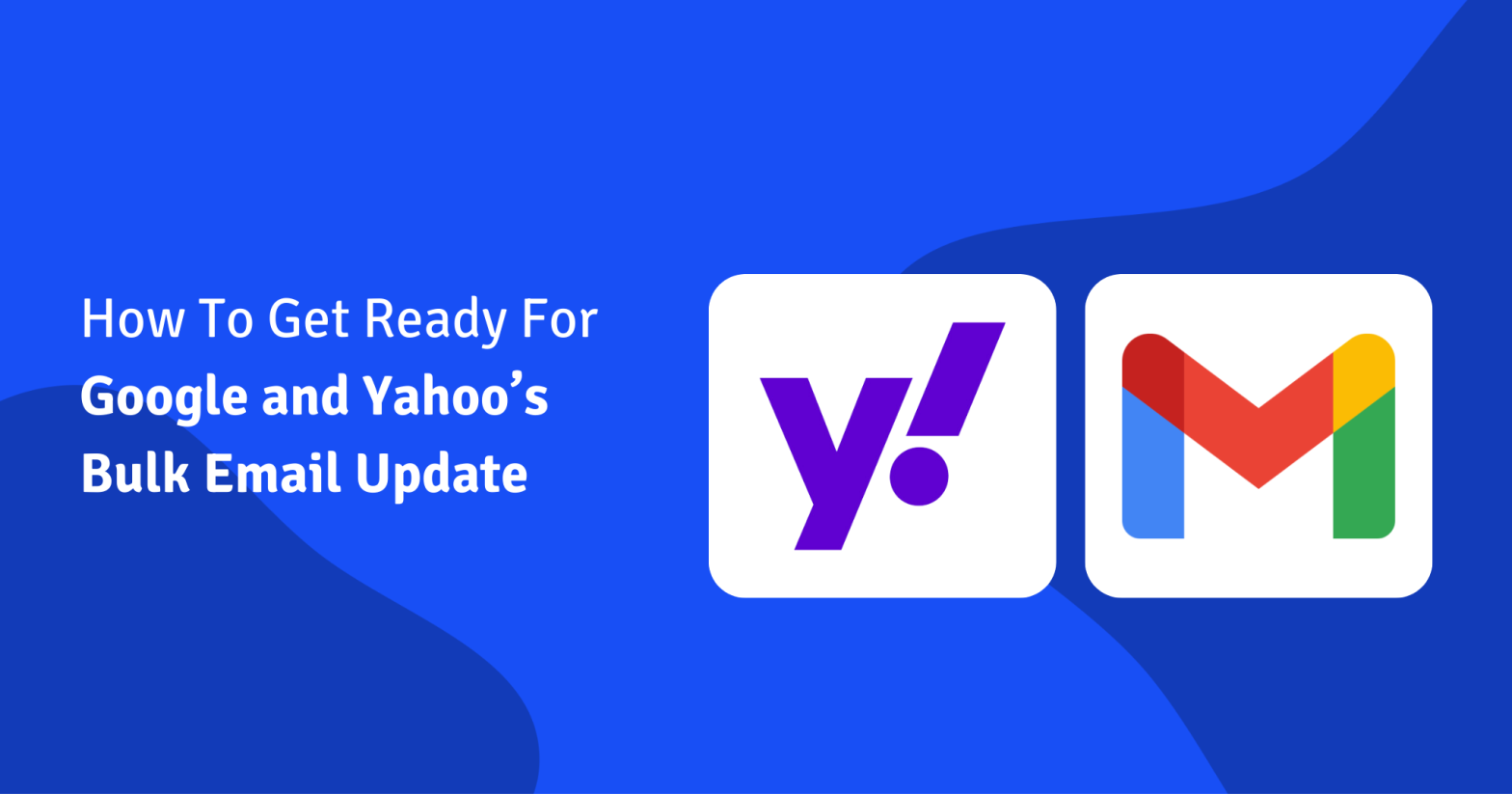No one likes to receive spam emails, and the folks at Gmail and Yahoo know that, too. That’s why they’re implementing new changes to their services, and more specifically, adding new requirements to users who send emails to more than 5000 addresses each day.
While this seems like a great idea to reduce the number of pesky, unwanted messages in our inboxes, it also adds a new level of preparation for those of us in digital marketing who are, indeed, bulk senders.
What have Gmail and Yahoo said exactly?
Both platforms have released similar statements focusing on their efforts to eliminate spam messaging and delivering better experiences for their users.
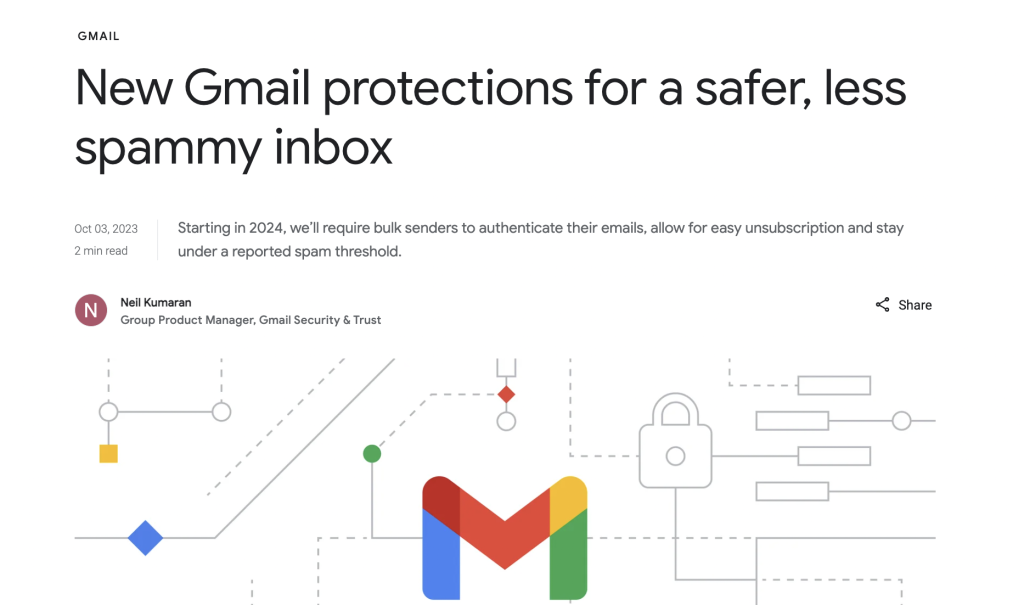
Google has said:
“Gmail’s AI-powered defenses stop more than 99.9% of spam, phishing and malware from reaching inboxes and block nearly 15 billion unwanted emails every day. But now, nearly 20 years after Gmail launched, the threats we face are more complex and pressing than ever.
So today, we’re introducing new requirements for bulk senders — those who send more than 5,000 messages to Gmail addresses in one day — to keep your inbox even safer and more spam-free.”
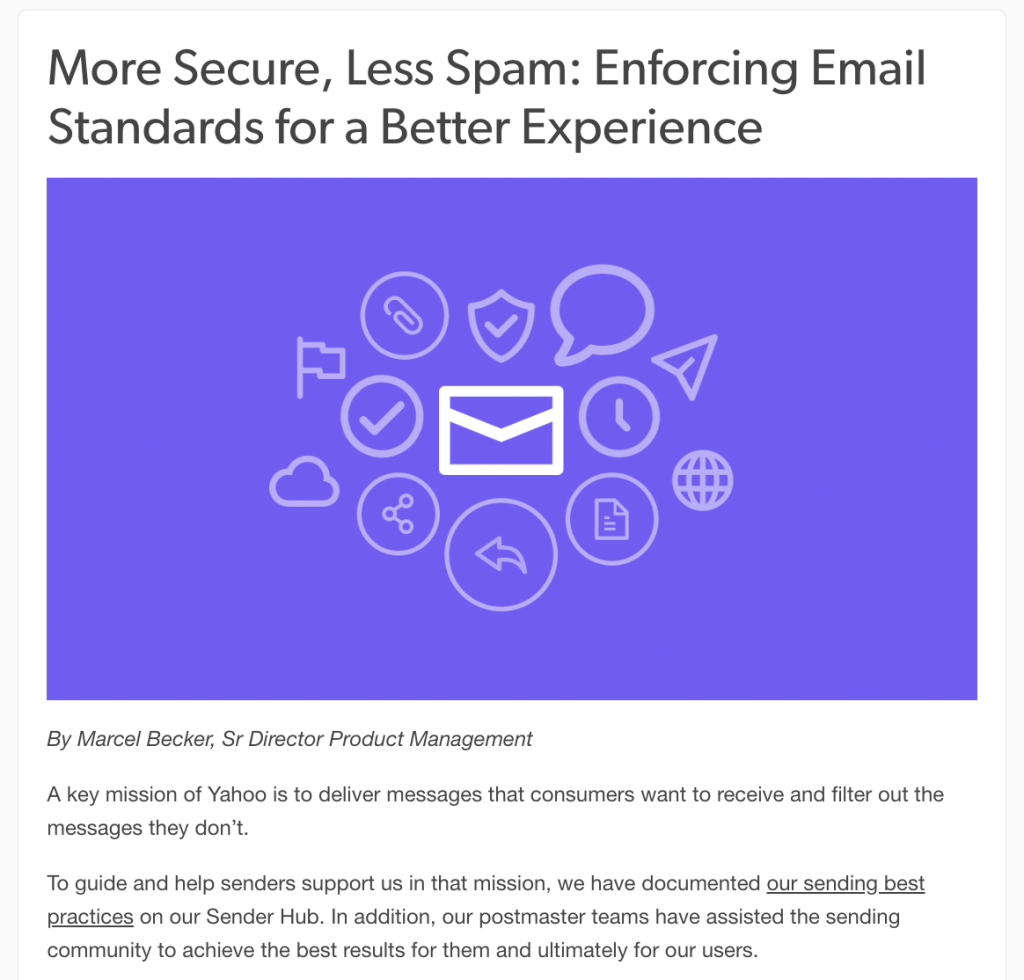
Yahoo outlined the following issues:
“In the first quarter of 2024, we will require that all bulk senders:
- Authenticate their email: To help our users to be more confident about an email’s source, we will require senders to implement stronger email authentication leveraging industry standards such as SPF, DKIM and DMARC.
- Enable Easy Unsubscription: Our users should be able to unsubscribe from unwanted emails without any hassle. It should just take one click. While we have promoted solutions for some time, adoption of these common sense standards have been low. We will require senders to support one-click unsubscribe and honor our users requests within two days.
- Only send emails our users want: True to our key mission, we want to ensure our users’ inboxes are not cluttered with unsolicited or irrelevant emails. While we have measured user reported spam rates for some time and even exposed some of that data for trusted senders, we will start enforcing a threshold to ensure our users can continue to enjoy a spam free mailbox.”
Basically, both of these email giants want their users to experience a safe, spam-free messaging service – and they’re targeting bulk senders to do that.
Am I a bulk sender?
If you send more than 5000 emails to Google accounts in one day, Gmail and Yahoo consider you a bulk sender.
Be careful: Google will be including personal accounts ending in @gmail.com and @googlemail.com, and all traffic will be counted towards the total 5000. That means you should be careful of transactional emails, and not just your marketing messages.
What do you need to do to prepare?
So, if you’re a digital marketer and you are sending emails to lists of 5000+ people, what’s next? How do you make sure that your emails are still reaching your subscribers?
Here are a few of the key steps to take (if you have not already):
Set up DMARC authentication
DMARC (Domain-based Message Authentication, Reporting & Conformance) is a protocol that adds an additional layer of security to your email domain, ensuring that emails are legitimate and not spoofed. Implementing DMARC authentication for your business can provide numerous benefits, including increased email deliverability, improved brand reputation, and better protection against email fraud and phishing attacks.
Fortunately, you can set up DMARC authentication on your own through your DNS provider at any time. Begin by setting your DMARC enforcement policy to none, and follow Google’s specific guidelines to ensure your brand is set up for success.
Proofpoint has created this handy graphic to explain DMARC, if you’re new to it:
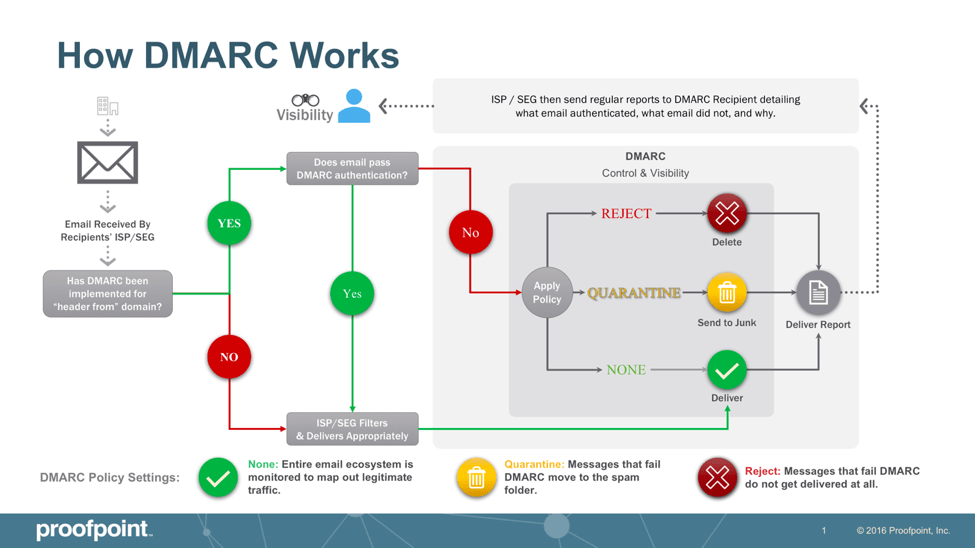
Match your sender “from” to your domain
Bulk senders must have their own sending domain, and are no longer able to use shared domains. Additionally, the domain in the “From:” header (which appears in your subscribers’ inboxes) must align with your sending domain to be DMARC compliant.
If you’re using an info@domain.com “From” address, it’s already aligned with a send.domain.com dedicated sending domain, so there’s no need to update your “From:” address to something like info@send.domain.com. Again – this applies to both marketing and transactional emails.
It’s worth noting that while shared domains are not permitted, having a dedicated IP is not necessary – using a shared one is still acceptable.
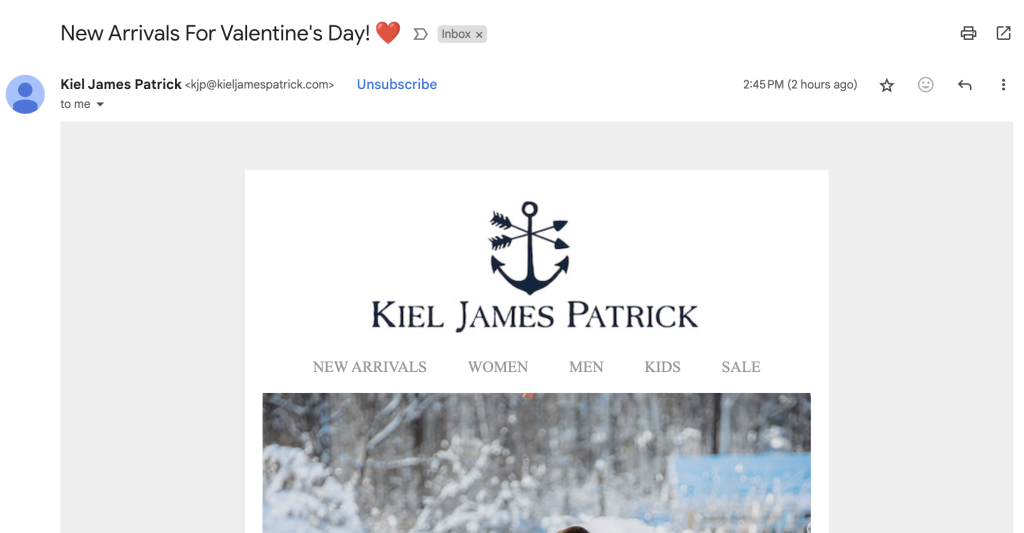
Make unsubscribing simple
It can be tempting to hold onto as many email subscribers as possible, but it’s important to remember that the quality of your email list is just as important as the quantity. By including an opt-out link, you give your subscribers the freedom to choose whether or not they want to receive your emails. This not only shows respect for their preferences but also helps to ensure that your emails are reaching people who are genuinely interested in your content.
When it comes to these changes, as well, Gmail and Yahoo will mandate a single-click unsubscribe process starting in 2024. This means that recipients can easily unsubscribe without needing to confirm their email address or update their subscription preferences. Email senders will have a two-day window to implement these requests.
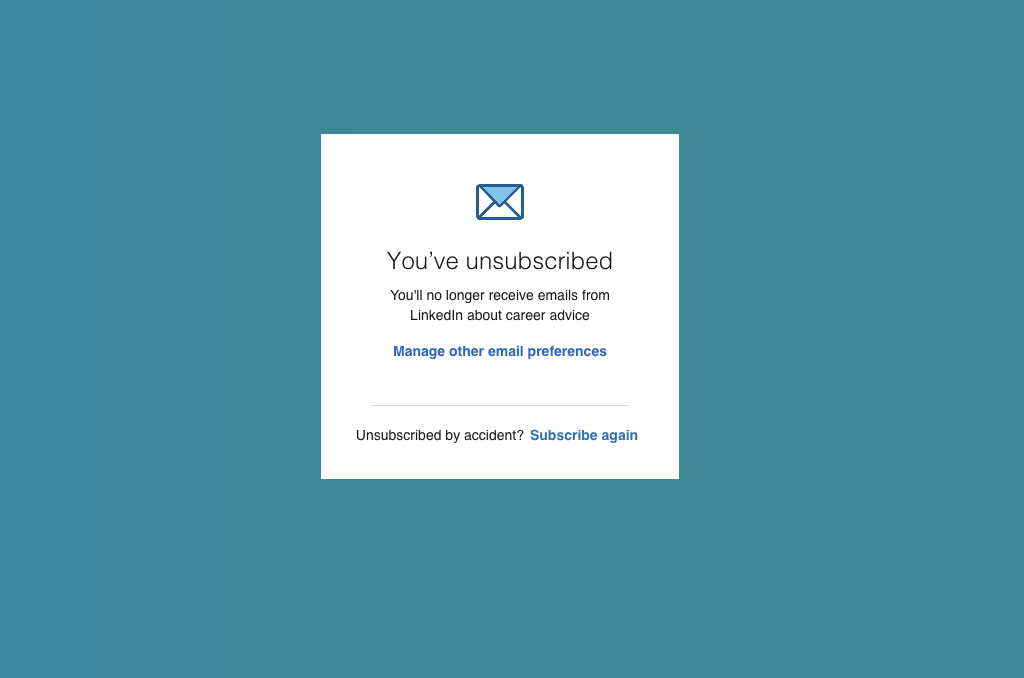
Klaviyo, specifically, has said of this:
“Klaviyo will implement a “list unsubscribe header”—instructions to Gmail and Yahoo to provide an unsubscribe link at the top of the email—beginning before February 1, 2024. This will satisfy the “one click to unsubscribe” requirement, automatically apply to all marketing emails built in Klaviyo, and brands won’t need to configure anything.”
Be careful of spam rates
It is an industry standard that your spam rate is 0.1% or less – which is, roughly, 1 spam complaint every 1000 messages.
This is even more important now.
To keep your spam rate low, it’s important to monitor and remove inactive subscribers before they mark your emails as spam. Additionally, be sure to promptly respond to any sudden surge in spam complaints by reviewing your sending practices and cleaning up your email list.
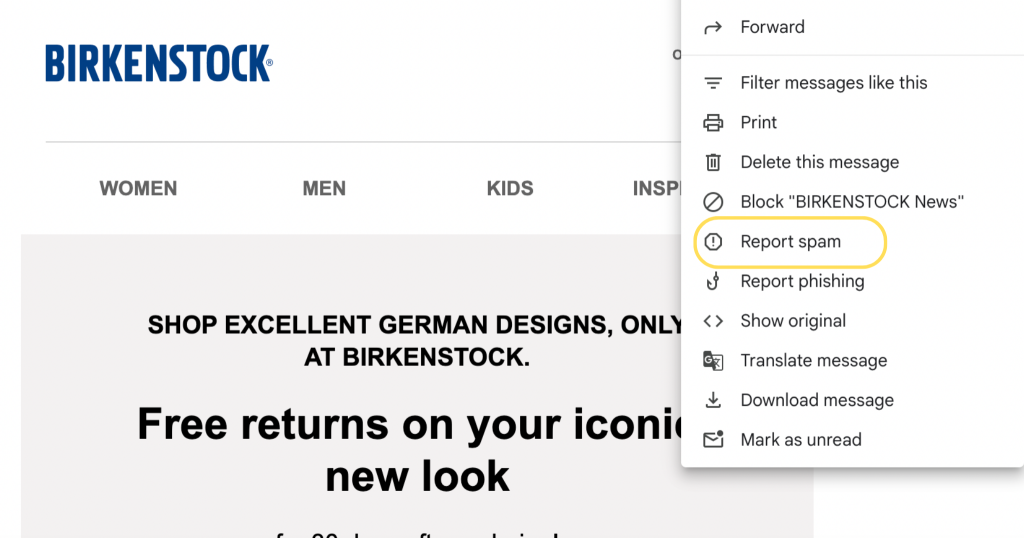
Depending on your mailing platform, you may be able to see your spam rate or percentage in your analytics. Otherwise, be careful: Yahoo provides traditional feedback loops, but Google does not.
If you are a gmail user, you must sign up for Google Postmasters Tools to monitor your spam rates and take necessary actions to reduce it.
Need some help?
If you need assistance implementing these changes and making sure that you are up to date for these changes coming this year, get in touch today. We’d be happy to help you.
Reach out via our website now.
We also send out tips and tricks in our newsletter Shopify Insider. Sign up to that here so that you don’t miss out on any more expertise in achieving higher conversions.
